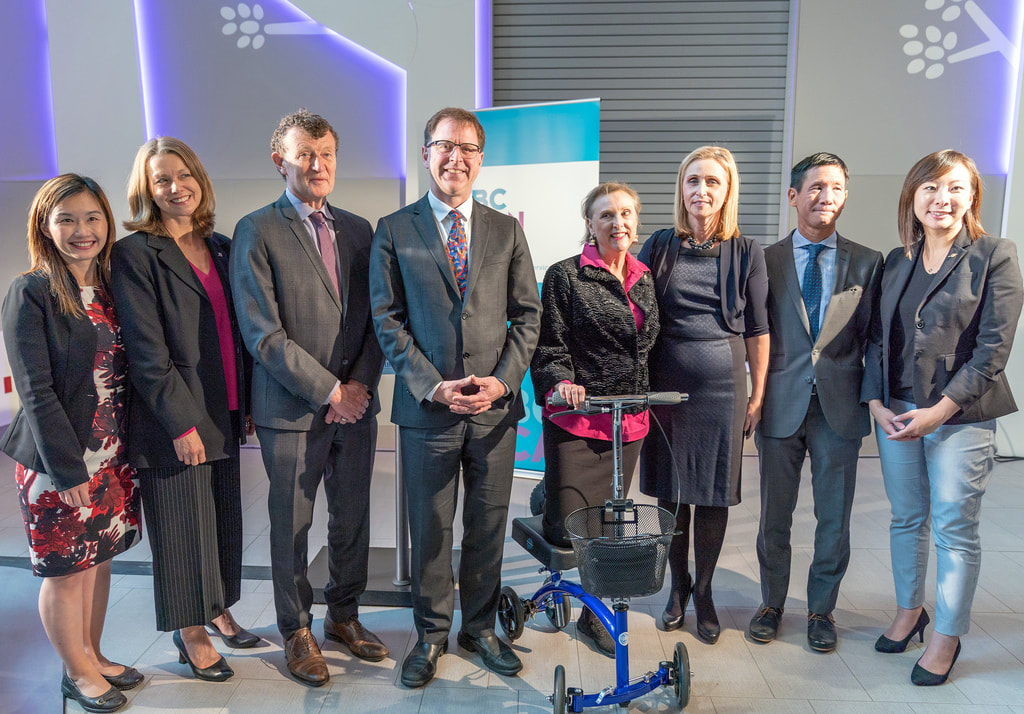|
In October 2018, the Canadian province of British Columbia became the first jurisdiction internationally to adopt the policy of notifying all women of their BI-RADS breast density category when they attend the population-based breast cancer screening program (British Columbia Cancer Breast Screening Program, or BCCBSP). The government-funded Medical Services Plan covers supplementary breast ultrasound for women with dense breasts, when they are referred by a physician or nurse practitioner based on their clinical judgment, and in accordance with the provincial clinical guidelines. This policy change was brought about following campaigning by the patient advocacy organisation Dense Breasts Canada, strong support from the community, and the completion of a review by Dr. Andy Coldman from the University of British Columbia and the British Columbia Cancer Research Centre. Adrian Dix, British Columbia Minister of Health, announces breast density policy change, source How does this policy differ from other jurisdictions that report breast density? While British Columbia is the first jurisdiction to notify all women of their breast density category as part of a population health screening program, a number of states in the USA, and also Western Australia, have policies and laws around breast density notification. However there are some key differences between these and British Columbia, listed below, that make the policy change in British Columbia unique and significant. USA Thirty six states of the USA mandate breast density notification to women with dense breasts, or provide general information about breast density after a patient’s mammogram (see here for details on each state law). This is a legislated requirement of these states and differs from the new BCCBSP policy. Unlike Canada, the USA does not have a population-based breast cancer screening program. Instead, coverage for screening mammography is required through the federal Affordable Care Act, providing no cost breast cancer screening. Provision of supplementary screening after mammography in women with dense breasts depends on the specific law of each state, and a woman’s insurance coverage through her health care policy. If supplementary screening is ordered by a physician, the cost is generally covered, but the patient may be responsible for out-of-pocket costs like a copay or deductible. Western Australia BreastScreen Western Australia notifies women with dense breasts as part of Health Department policy. Like Canada, Australia has a population-based breast cancer screening program. However, the BreastScreen WA policy differs to the BCCBSP policy in two ways. Firstly, BreastScreen WA notifies women with dense breasts, either BI-RADS category ‘Heterogeneously dense’ or ‘Extremely dense’ but does not distinguish between these two categories. The BCCBSP policy notifies ALL women of their specific BI-RADS category (‘Mostly fatty’, ‘Scattered density’, ‘Heterogeneously dense’ or ‘Extremely dense’). Secondly, West Australian women with dense breasts who wish to pursue supplementary ultrasound do so at their own expense, although they are eligible for a partial rebate when they have a doctor’s referral. British Columbia has a mechanism to provide fully government-funded supplementary ultrasound when women have a referral. Both Western Australia and British Columbia do not directly recommend supplementary ultrasound for women with dense breasts. In a factsheet for General Practitioners, BreastScreen Western Australia state “Supplemental screening of women with dense breasts who are average or low risk is not currently recommended by any international evidence based studies. However, the American College of Radiologists/Society of Breast Imaging appropriateness criteria state that women at intermediate risk of breast cancer due to a family history, a personal history of breast cancer, or other risk factors including premalignant lesions such as lobular neoplasia may benefit from regular supplemental whole breast ultrasound.” In British Columbia, the BCCBSP website states “Some scientific evidence exists that other tests, such as breast ultrasound, are able to detect additional cancers in women with dense breasts, but also have a high rate of false positives resulting in unnecessary biopsies.”, and that “The choice to have additional testing should be made on an individual basis after a discussion of the risks and benefits along with the individual’s values and preferences with a health care provider.” What does this policy change mean for Australia? The adoption of breast density notification in British Columbia is significant for Australia. The BCCBSP maintains an excellent longitudinal database recording information on breast density and other breast cancer risk factors. This database enables the evaluation of specific screening outcomes including disease detection, interval cancers (breast cancers that occur between screening mammograms), staging, and false positives (instances when a woman is recalled for further tests that then determine the woman does not have breast cancer). This database will be an invaluable resource for other jurisdictions to assess the impact of breast density notification to inform future health policy. Additionally, the involvement of patient advocacy in driving the review and policy change is an indication of the responsiveness of government Health Departments to community perspectives. Each jurisdiction is likely to develop its own approach to managing breast density within population-based breast cancer screening programs based on a number of contributing factors including the evidence base, feasibility, and the community’s range of attitudes and concerns. In Australia, Breast Cancer Network Australia and the Pink Hope charity are lobbying for policy change on breast density. Read the InforMD perspective on breast density notification here.
2 Comments
|
Archives
Why does the United States have Dense Breast "Inform" Laws? What I learned and why it matters
BreastScreen Australia conference debate "Breast density - Should we tell the women?" InforMD - a new initiative to raise awareness about breast density Breast density in screening, detection and incidence of breast cancer The global breast density conversation: Meet one woman driving change in the United Kingdom What to expect at a mammogram appointment Categories
All
|


 RSS Feed
RSS Feed
